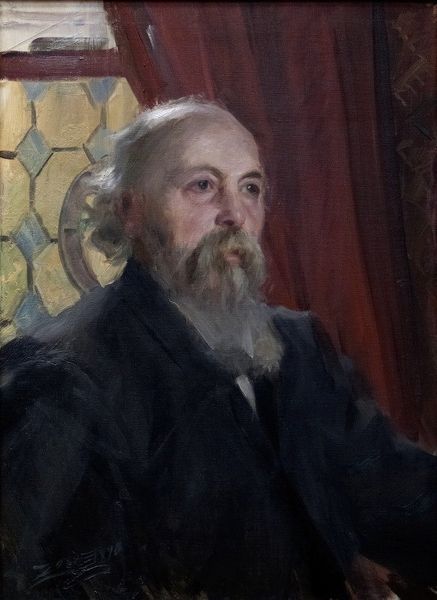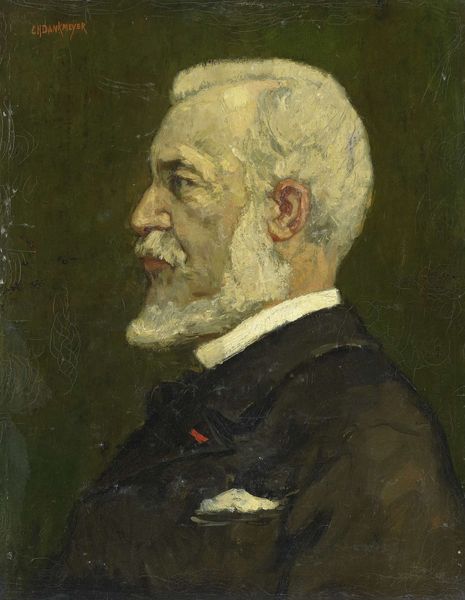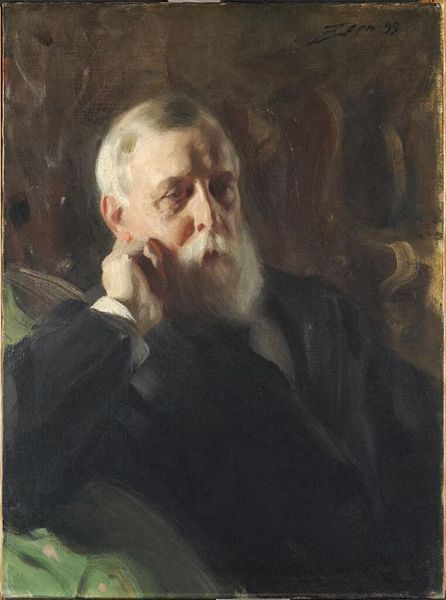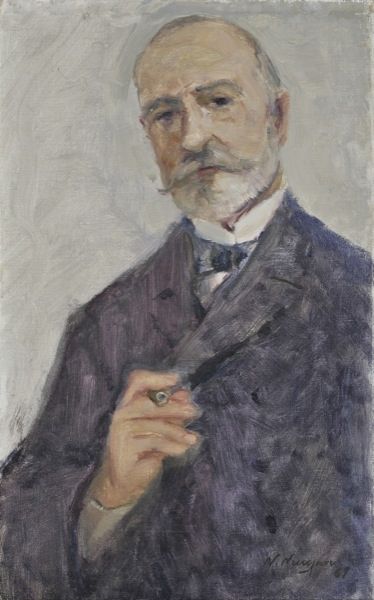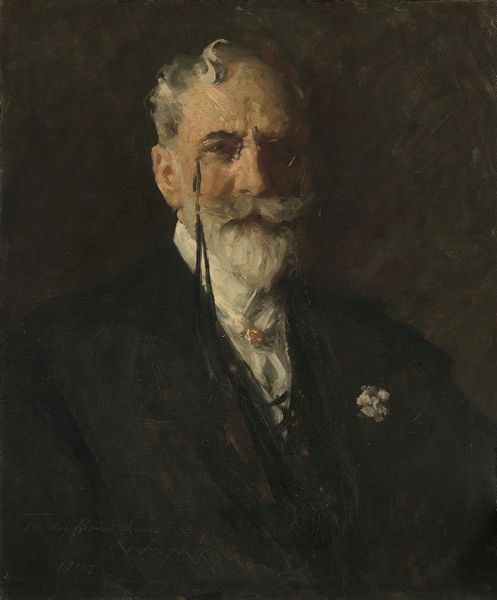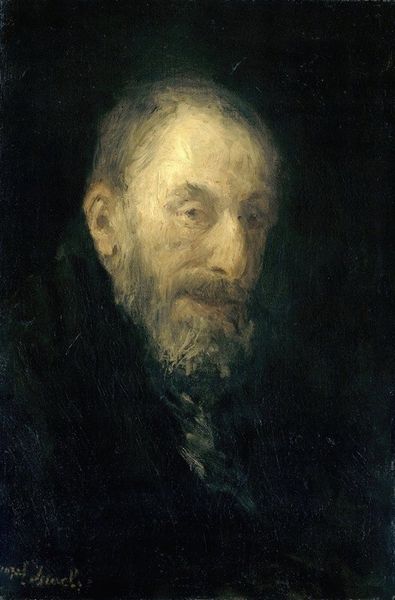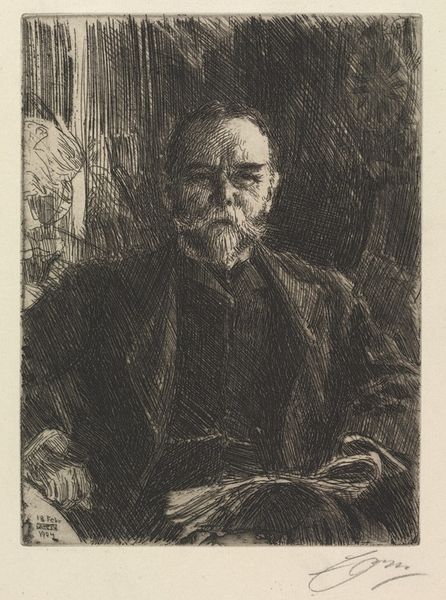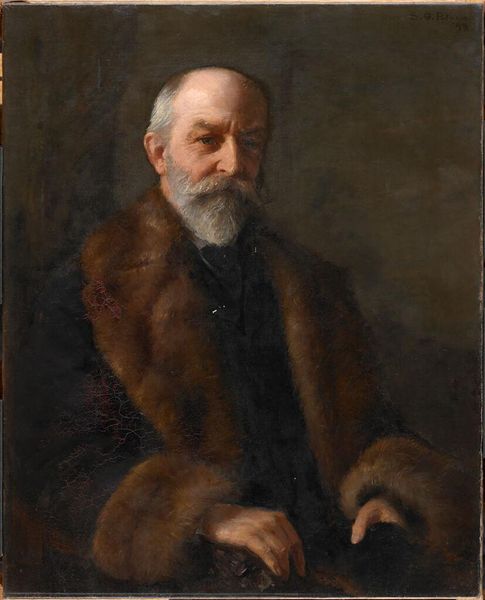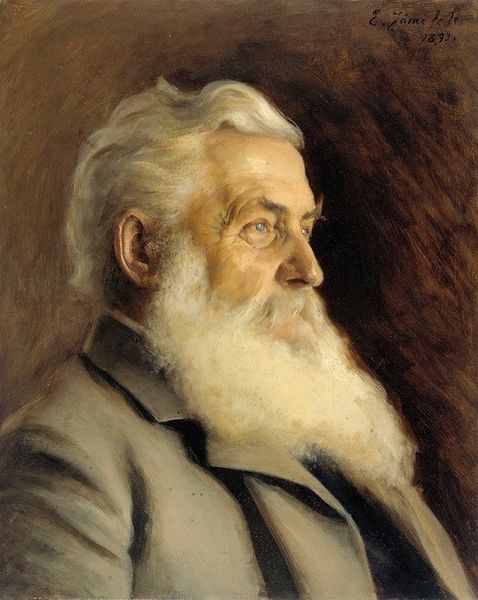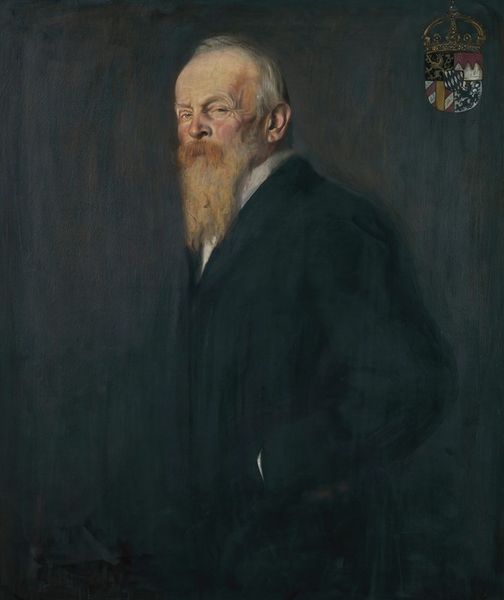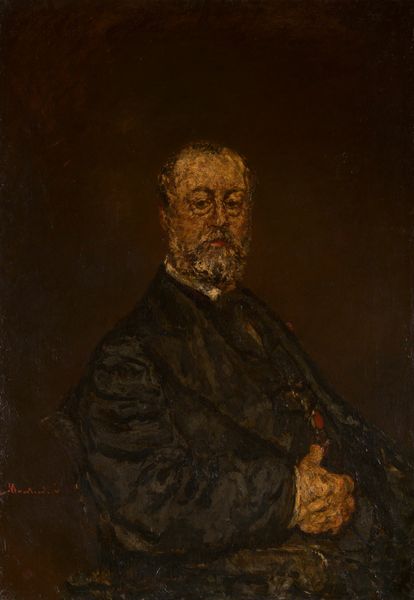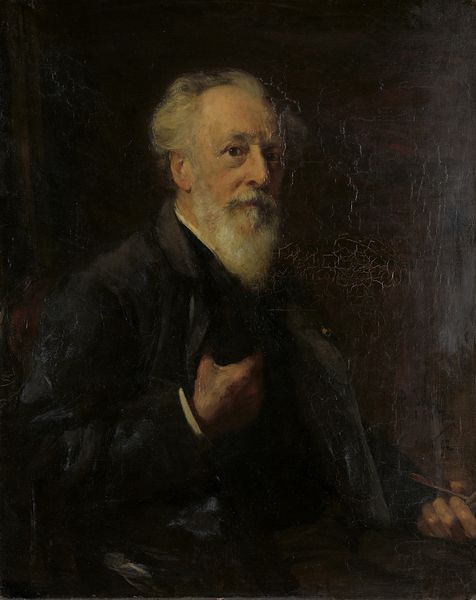
Copyright: Public domain
Curator: This is Karoly Ferenczy’s “Portrait of Pál Szinyei Merse,” painted in 1910. An oil on canvas rendered with a distinct impressionistic touch. Editor: It strikes me immediately with its sombre tone, an almost melancholic air. The subdued palette reinforces a sense of gravitas. Curator: Indeed, Ferenczy's brushwork is looser here than in some of his other works. The planes of the face are simplified, with minimal tonal variation within each area of color. The artist uses shadow to suggest three-dimensionality. Note how the figure’s attire blends almost seamlessly into the background, drawing greater attention to the face and hands. Editor: I see Szinyei Merse was also a painter, wasn’t he? How did the artistic relationship between them shape this piece? Given Szinyei Merse’s reputation for light and color, this portrait seems remarkably muted by comparison. Is this Ferenczy’s homage, or a more nuanced commentary? Perhaps about Szinyei Merse’s later years? Curator: That's a astute point. Ferenczy’s choice may be a reflective commentary on Szinyei Merse’s place in the art establishment. Although Merse did not gain notoriety in his youth, his contributions to Hungarian Impressionism cannot be denied. By 1905, he had a seat at the Hungarian Academy. The somber and reserved palette underscores the weight of Szinyei Merse’s role. Editor: You’re right. I am particularly drawn to how his hand emerges from the darkness holding what looks like chalk, a reminder of Szinyei Merse's active hand as both teacher and maker. Curator: A gesture, perhaps, to signal Szinyei Merse's craft and profession at the time. The white chalk also offers visual contrast in an otherwise darkened scene, guiding the eye. Editor: It's fascinating how Ferenczy uses a combination of portraiture, history and stylistic choices to paint not just an individual but a complex interplay of artistic legacy and personal identity. I leave seeing beyond a rendering and a real story unfolding on the canvas. Curator: I concur; by distilling his subjects down to shapes and tonal variations, Ferenczy compels us to consider the power of restraint, balance and symbolism and consider not just the history of art but a master in practice.
Comments
No comments
Be the first to comment and join the conversation on the ultimate creative platform.

